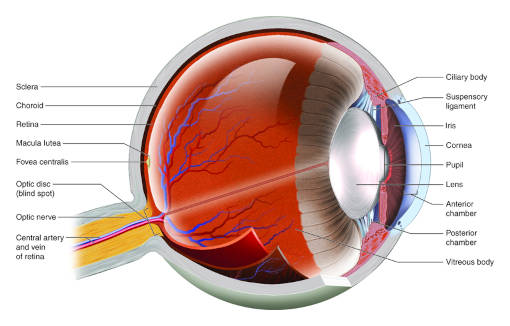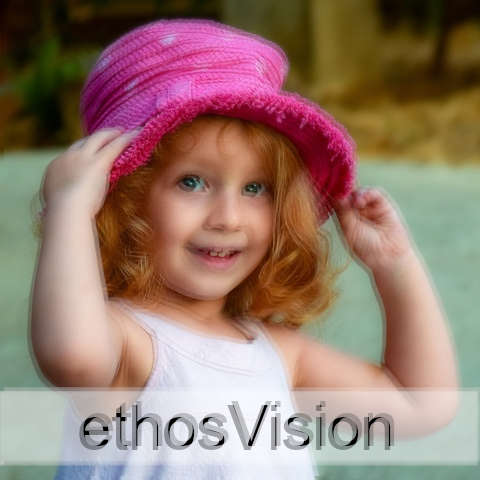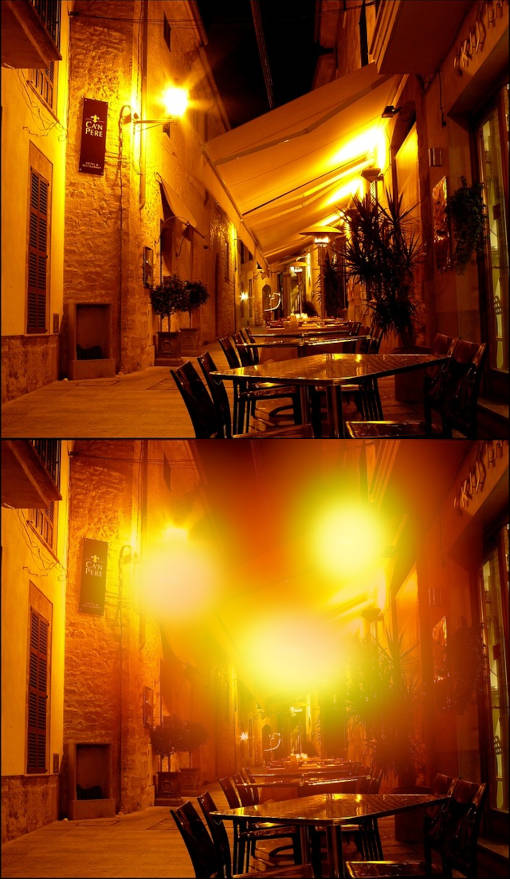Glaucoma Symptoms and Treatment
Signs of Glaucoma – How to Protect and Restore Your Vision Naturally
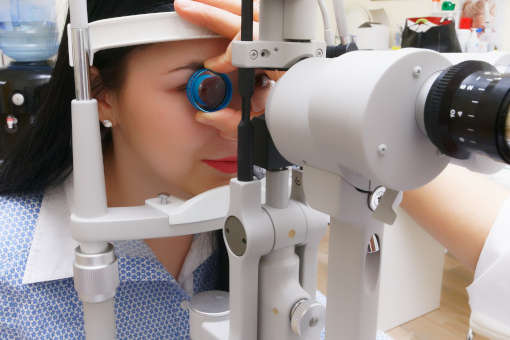
Glaucoma Prevention and Treatment
If you notice signs of vision decline, schedule an appointment with a qualified optometrist for an accurate evaluation and take immediate action to prevent further vision loss.
Studies show NAC Carnosine eye drops to be a safe and effective aid to help with glaucoma, relieving eye pressure and restoring eye health.
Glaucoma – The Sneak Thief of Sight
Glaucoma is an eye condition that affects millions of people worldwide and can cause irreversible vision loss if left untreated. It is often referred to as the “Sneak Thief of Sight” because glaucoma symptoms may not be noticeable until there has already been significant damage to the optic nerve.
Early diagnosis and treatment are key in preserving vision and slowing glaucoma’s progression.
To diagnose glaucoma, eye care professionals use a comprehensive eye examination to look for signs of glaucoma, including assessing the patient’s vision and checking the pressure within the eye.
Additionally, glaucoma can be detected based on how it affects a person’s vision. Here, we take a look at glaucoma symptoms and what glaucoma vision looks like.
This article has been written to provide an overview of glaucoma symptoms and the latest natural methods to prevent glaucoma and stop this ‘Sneak Thief of Sight’ worsening.
We will discuss the foods glaucoma patients should avoid and foods that are important to sustain healthy vision. We will also demonstrate how a remarkable natural eye drop and the right supplements have been clinically tested to help glaucoma patients regain their eye health and sight.
Symptoms of Glaucoma
As the disease progresses, it can cause a variety of more apparent symptoms including severe pain, haziness in vision and light sensitivity – all of which are key indicators for an ophthalmologist’s diagnosis.
Because inflammation due to oxidative stress and malformed proteins are implicated in nearly every aspect of age-related visual decline, it is essential to take steps to reduce the inflammation in the eye. [1.] [2.]
New advances in glaucoma eye drops and nutrition specific for optimum eye health, are proving effective at reducing oxidative stress and inflammation in the eyes. As well as improving blood circulation and preventing other complications associated with glaucoma.
Taking these precautionary steps as soon as possible can help avoid further complications developing and help to protect your eyes from further vision decline. Now and for years to come.
What Does Glaucoma Vision Look Like?
Glaucoma is an eye condition that affects millions of people worldwide and can cause irreversible vision loss. It is often referred to as the “Sneak Thief of Sight” because glaucoma symptoms may not be noticeable until there has already been significant damage to the optic nerve.
Early diagnosis and treatment are key in preserving vision and slowing glaucoma’s progression. To diagnose glaucoma, eye care professionals use a comprehensive eye examination to look for signs of glaucoma, including assessing the patient’s vision and checking the pressure within the eye.
Additionally, glaucoma can be detected based on how it affects a person’s vision. Here, we take a look at glaucoma symptoms and what glaucoma vision looks like.
As the symptoms of glaucoma do become noticeable in the field of vision, a darkening of the peripheral vision becomes apparent. If you have the visual signs of glaucoma in your sight, you may notice that your vision is becoming more restricted and slowly getting worse.
EARLY STAGE GLAUCOMA

ADVANCED GLAUCOMA
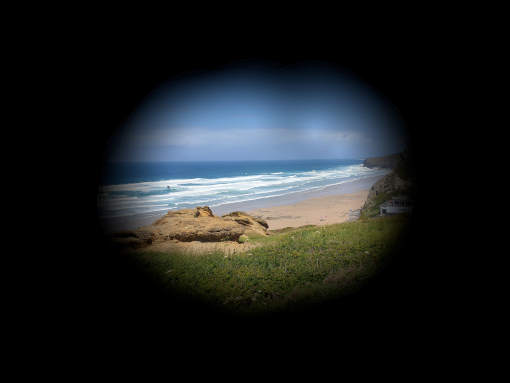
EARLY TO MILD STAGE GLAUCOMA
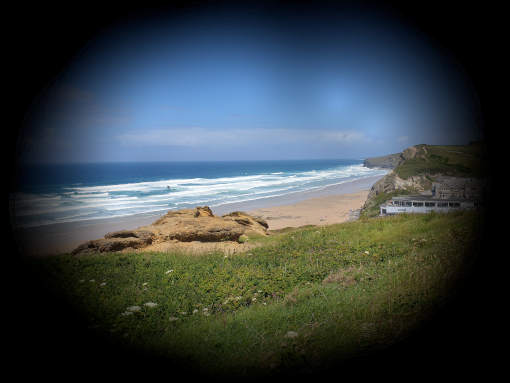
EXTREME GLAUCOMA
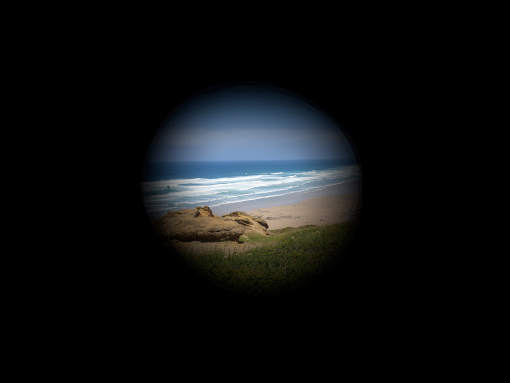
People with glaucoma often report of blurry or hazy vision
Glaucoma is a serious eye condition that, if left untreated, can lead to blindness. As stated above, its early symptoms are often difficult to detect. However, it’s important to be alert for such warning signs as blurred vision, impaired night vision, gradual loss of peripheral vision and eye pain.
Double vision is a common symptom of early glaucoma
Double vision, or diplopia, is an issue that can affect many people of varying ages and can be associated with most eye disorders or old eyes, not just glaucoma..
It can be a symptom of other conditions such as stroke, multiple sclerosis and thyroid disorder.
It is also a common side-effect of certain medications, surgery and injuries to the eye or brain.
With double vision, patients may find that their activity levels decrease due to difficulty in depth perception and mobility, leading to various physical effects.
What does early stage glaucoma vision look like?
In glaucoma, the peripheral vision (side vision) is usually affected first. If glaucoma is left untreated, it can lead to tunnel vision or blind spots in your field of view.
You may also find that colors seem less vivid and lights appear brighter than usual.
Glaucoma vision can vary from person to person, but usually involves a gradual loss of peripheral vision and/or color distortion. The patient’s vision will become blurry and colours may be difficult to differentiate.
If untreated, the patient’s vision will continue to deteriorate until their daily activities become significantly impacted.
What Does Glaucoma Vision Look Like At Night?
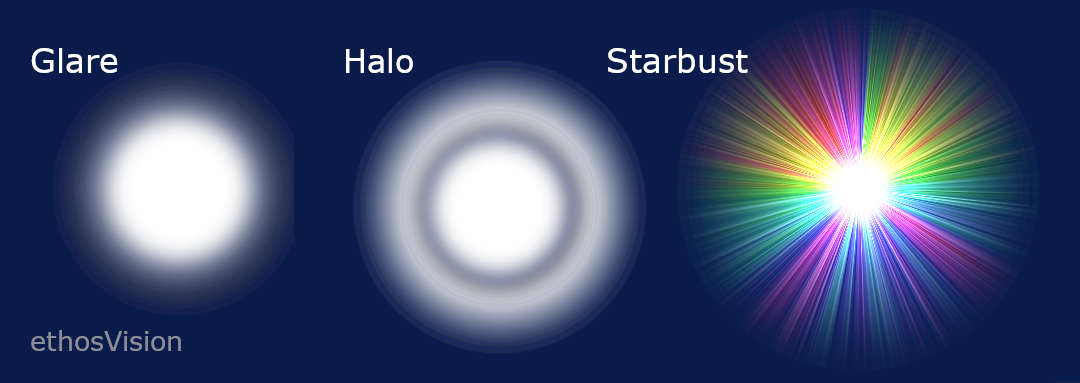

Lights appear bright with excessive glare
Bright lights can be a nuisance for many of us, particularly those with underlying eye health issues.
An intense glare or too much intensity in lighting may make it difficult to do certain activities, such as reading and driving.
Overly bright environments can even cause eyestrain and headaches.
To lessen discomfort, people should reduce exposure to overly bright lights by adjusting the brightness of designated lamps or room lighting and/or wearing specialized glasses.
Additionally, try to avoid looking directly at a bright light source and stay away from any objects that reflect strong direct light. Taking extra care to manage light exposure is especially important for those with pre-existing visual impairments.
Night vision may be decreased
Several different factors can come into play when it comes to this issue, such as the patient’s overall eye health or the presence of any eye disease.
It’s important for all those affected by decreased night vision to take steps to protect what vision remains.
Schedule a proper evaluation with your local optometrist or ophthalmologist in order to determine a proper course of action.
That way, any questions can be answered and precautions taken, ensuring safe and secure movement on even the darkest of nights..
Inflammation and/or Oxidative Stress Implicated in Nearly All Eye Disorders
Oxidative stress and inflammation are primary contributors in disease and are implicated in nearly all age-related eye disorders. Over time, damaged proteins and inflammation can accumulate in the eye, leading to poorer eye health, impaired vision and ultimately blindness.
This combination of damaged and dysfunctional proteins and inflammation increases the risk for age-related macular degeneration, cataracts, glaucoma, dry eyes and most other visual impairments.
In this next section we examine a number of simple ‘life style changes’ highly effective in preventing and slowing down the progression of deteriorating vision, including glaucoma.
Starting this regime early on when you first notice a decline in the quality of sight, has been clinically proven to reverse damage to eye health and restore vision!
If You Are Noticing Early Signs Of Glaucoma Or Visual Decline…
NOW Is The Best Time To Start Protecting Your Eye Health and Vision
Reclaim and restore your vision without surgery or any toxic medications
How to Prevent Glaucoma and Avoid other Associated Eye Disorders
Although glaucoma cannot be completely cured, its progression can be slowed or stopped with the right treatment. To reduce your risk of glaucoma and its vision loss, you can take steps to naturally lower your intraocular pressure and aid the body’s own repair mechanisms.
Here are some essential treatment methods that will help preserve your eye health and quality of vision:
• NAC Carnosine Eye Drops: A natural eye drop without side-effects, containing antioxidation, anti-inflammatory, and anti-hypertensive properties that help reduce eye strain and intraocular pressure.
• Carnosine supplementation: Carnosine is an amino acid found in high concentrations in the brain and muscles and within the eye. Supplementing l-carnosine improves critical blood circulation to the eye and removes toxins from the body which will help with intraocular pressure experienced by glaucoma sufferers.
• Lutein and Zeaxanthin: Antioxidants that help prevent glaucoma damage by protecting the eye from free radical damage. Feeding your eyes correctly will help protect your eyes for years to come. [6.]
• Food Choices: Minimize processed foods, saturated fats, and refined sugars which can lead to inflammation and an increase in eye pressure. Increase foods rich in carotenoids and antioxidants such as leafy greens and yellow and orange vegetables.
Glaucoma is a serious eye condition that can lead to permanent vision loss if left untreated. It’s important to be aware of the symptoms and to implement preventative measures as soon as possible to relieve the pressure and protect your sight from further decline and implications.
Best Eye Drops for Glaucoma, Cataracts, Dry Eyes…
Until recently, surgery has been the only available option to treat cataracts and restore a patient’s vision. Most Doctors and ophthalmologists still believe there’s no known way to reverse or slow the progression of cataracts.
Yet, clinical evidence suggests otherwise. Clinical studies from around the world are reporting advances in managing cataracts naturally, without the need for toxic drugs and surgical procedures.
N-acetylcarnosine Eye Drops or NAC Eye Drops, a non-surgical treatment has made dramatic improvements in those afflicted with glaucoma and other other age-related eye disorders, including cataracts and dry eyes.
Ethos Bright Eyes NAC Eye Drops for Glaucoma is a revolutionary product developed by experts in vision care that uses specialized eye drops designed to help battle the formation of glaucoma and many other eye disorders. They are rich in a powerful, natural antioxidant called ‘Carnosine‘.
This unique eye drop has already helped many 1000’s of glaucoma sufferers with renewed hope for better vision and living their life more fully.
How do Ethos Bright Eyes help glaucoma and prevent other eye complications?
One of the primary ways in which Ethos NAC Eye Drops protects and restores vision, is by reversing oxidative damage (glycation), and relieving pressure in the eye. Reversing the free-radical damage and protecting your eyes prevents further vision loss.
Left untreated, these damaged proteins, caused by the process of ‘glycation’, inhibit the normal function of the eye, can result in additional pressure and further vision decline.
Inflammation plays a pivotal role in most diseases, but especially so with glaucoma.
Ethos NAC Eye drops have been successfully used for preventing and reversing cataracts for over 20 years.
They were proven safe and effective when put to the test on UK National Television.
Ethos NAC Bright Eyes Glaucoma Eye Drops can safely help with eye complications by immediately working on oxidative damage in your eyes. In addition, Ethos Bright Eyes are proven to protect you from the onset of numerous other age related eye complications developing, including cataracts and dry eyes.
Consistent Blood Flow Is Essential for Optimum Eye Health
It is essential to understand the importance of ocular blood flow and its impact on various ocular diseases.
Ocular perfusion pressure plays a critical role in regulating optimal distribution of oxygen and nutrients throughout the eye while maintaining constant autoregulation under normal conditions.
However, if disrupted or unbalanced due to dysregulation then this can contribute towards serious medical disorders such as glaucoma & diabetic retinopathy. [3.]
It is thus vital for you to recognize these risk factors and understand the importance of improving circulation and blood flow to the eye, as a critical step to improving eye health and preventing further vision decline.
L-Carnosine – Increase Circulation and Reverse Aging
Carnosine is one of the most powerful natural anti-aging compounds available today.
Offering a vast range of benefits to users, from prevention and delay of age-related diseases, to improved brain function and physical performance.
Carnosine research is changing the way conventional medicine thinks about aging. As documented in over 2,950 Carnosine Clinical Trials and Research Papers on PubMed.
L-carnosine has been proven to possess the extraordinary capability of revitalizing aged cells and those in a deteriorating state, restoring them back to their optimal health. Previously it was thought that such deterioration could never be reversed – however ongoing research indicates otherwise.
Carnosine not only prolongs cell cycles by increasing the time between division but also multiplies intervals, thus ultimately lengthening lifespan significantly when carnosine is present within higher quantities.
Carnosine has proven to be an effective tool in the battle against ageing, due its remarkable capability of safeguarding and preserving core parts that make up our bodies.
This naturally occurring compound plays a key role in extending life-expectancy with numerous studies indicating its safe use as well verifying through animal testing and cell cultures how it promotes longevity.
Carnosines’ antioxidant, protective, chelating agent properties all contribute positively towards healthy cellular functioning making it essential for prolonging one’s lifespan.
How to Prevent Glaucoma from Worsening
If you’re at risk for glaucoma due to family history or have been diagnosed with it, you should consistently monitor your food intake and choose healthy options.
Foods to eat if you’re at risk for glaucoma
People at risk of glaucoma can benefit from dietary modifications that help to reduce intraocular pressure and protect the retina.
Eating foods rich in Omega 3 fatty acids has shown to be beneficial throughout the body. Omega 3’s can be found in salmon, tuna, or sardines, but this is not a sustainable food source and heavy metals in fish is now a major health issue, with mercury a particular threat.
Fortunately there are sustainable alternatives completely safe from heavy metals and toxins.
Marine Phytoplankton – Nature’s Perfect Superfood
Marine Phytoplankton is a rich source of Omega 3 fatty acids and helps a wide variety of diseases, imbalances and many chronic illnesses. This superfood boosts energy levels and stamina and significantly improves mental clarity and focus, while reducing inflammation and supporting a healthy immune system.
Other visible benefits include improved skin and hair, stronger nails, and improved vision. Marine Phytoplankton contains potent xanthophylls, and zeaxanthin, a powerful antioxidant proven to support eye health and improve vision.
Lutein and Zeaxanthin – Powerful Antioxidants for Eye Health
Current evidence suggests lutein and its isomers play important roles in ocular development in vision performance in young and later adulthood, and in lowering risk for the development of common age-related eye diseases in older age.[4.]
Consuming vegetables high in lutein and zeaxanthin, such as kale, spinach and broccoli will provide a good source of antioxidants that protect blindness-causing molecules from attacking your eyes.
There have been numerous clinical studies conducted on the efficacy of lutein and zeaxanthin in protecting against age-related macular degeneration, cataracts, and glaucoma.
The results of these studies have been overwhelmingly positive, with many participants experiencing significant improvements in their vision. By supplementing high potency lutein and zeaxanthin you can be sure of getting these highly beneficial and effective carotenoids into your diet.
What foods should glaucoma patients avoid?
It’s important to minimize processed foods, saturated fats, and refined sugars which can lead to inflammation and an increase in eye pressure. A simple change in eating habits can help stop glaucoma worsening.
You should especially avoid sugars and carbohydrates as they can increase your risk of diabetes, which is a major risk factor for glaucoma. Sugar damaged proteins in the eye can lead to inflammation and increase intraocular pressure, which is a major cause of glaucoma.
Summary of Natural Glaucoma Treatments:
Taking steps to care for your eyes is essential if you think you may be experiencing the early signs of glaucoma, cataracts, or any age-related eye disorder. To ensure a timely diagnosis and a treatment plan before complications worsen, it is important that three proactive measures are taken immediately:
1. Receiving an evaluation from an optometrist.
2. Using anti-inflammatory drops such as Ethos NAC Eye Drops.
3. Improving blood flow and circulation to the eye with specific nutrient rich foods or supplements.
Taking these precautionary steps will help to restore and protect your vision for years to come.
Types of Glaucoma
Glaucoma is an eye condition that can lead to permanent vision loss and is the leading cause of blindness. There are various types of glaucoma, which include Primary Open Angle Glaucoma (POAG), Acute Angle Closure Glaucoma (AACG), Closed Angle Glaucoma, Open Angle Glaucoma, Normal Tension Glaucoma (NTG), Narrow Angle Glaucoma, Chronic Angle Closure Glaucoma (CACG), Low Tension and Congenital Glaucoma.
Each type can affect Normal Eye Pressure and left untreated lead to optic nerve damage. This is where the optic nerve at the back of the eye becomes damaged due to increased pressure in the eye. Symptoms include blurred vision, loss of peripheral vision and halos around lights. Treatment for optic nerve damage includes medications or glaucoma drainage implants.
Normal eye pressure is the optimal pressure of the eye in order to keep it healthy, allowing enough fluid to drain from the eye without causing glaucoma.
Primary Open Angle Glaucoma is the most common type of glaucoma and occurs when the eye pressure increases due to clogged drainage canals in the eye. Symptoms of this glaucoma include blurred vision, loss of peripheral vision, halos and intense pain. Treatment for POAG includes medications such as eye drops, surgery and glaucoma drainage implants.
Acute Angle Closure Glaucoma is an eye condition where the iris moves in front of the drainage canals, blocking fluid from draining from the eyes. Symptoms may include blurred vision, severe eye pain and redness of the eyes. Treatment for AACG includes medications, surgery and glaucoma drainage implants.
Closed Angle Glaucoma is a type of glaucoma where the angle between the iris and cornea becomes too narrow, blocking fluid from draining properly. Symptoms of this glaucoma include blurred vision, seeing light halos, eye pain, redness of the eyes, nausea and vomiting. Treatment for closed angle glaucoma may include medications, surgery or glaucoma drainage implants.
Open Angle Glaucoma occurs when the eye pressure increases due to clogged drainage canals in the eye. Symptoms may include blurred vision, loss of peripheral vision and halos. Treatment for open angle glaucoma includes medications such as eye drops, surgery and glaucoma drainage implants.
Normal Tension Glaucoma is a type of glaucoma where the eye pressure is within normal limits but the optic nerve is still damaged. Symptoms of this glaucoma include blurred vision, loss of peripheral vision and light halos. Treatment for normal tension glaucoma may include medications, laser surgery or glaucoma drainage implants.
Narrow Angle Glaucoma is a type of glaucoma where the angle between the iris and cornea becomes too narrow, blocking fluid from draining properly. Symptoms of this glaucoma include blurred vision, seeing halos around lights, eye pain, redness of the eyes and nausea and vomiting. Treatment may include glaucoma medications, laser surgery or glaucoma drainage implants.
Chronic Angle Closure Glaucoma is an eye condition where the iris moves in front of the drainage canals, blocking fluid from draining from the eyes. Symptoms may include blurred vision, halos and intense pain. Treatment for CACG includes medications such as eye drops, surgery and glaucoma drainage implants.
Congenital Glaucoma occurs when a baby is born with glaucoma due to malformation of the drainage canals or the angle of the eye. Treatment for congenital glaucoma may include medications, laser surgery and glaucoma drainage implants.
Low Tension Glaucoma is a type of glaucoma where the eye pressure is lower than normal but still causes damage to the optic nerve. Symptoms of this glaucoma include blurred vision, loss of peripheral vision and halos. Treatment for LTG may include medications, surgery or glaucoma drainage implants.
Risk Factors for Glaucoma
Risk factors for glaucoma include family history of glaucoma, increased age and certain medical conditions such as diabetes and high blood pressure. Treatment for glaucoma includes medications such as eye drops, laser surgery and glaucoma drainage implants.
Glaucoma is a serious eye condition that can lead to blindness if left untreated. It is important to recognize the symptoms of glaucoma and get regular checkups with an ophthalmologist. Early diagnosis and treatment are key to preserving sight in glaucoma patients.
With the right care, glaucoma can be managed so that vision loss is minimized or even avoided. If you have any symptoms of glaucoma, it is important to speak to your doctor as soon as possible. Treatment options for glaucoma, such as glaucoma medications, laser surgery and glaucoma drainage implants, can help manage the condition and maintain good eye health.
Being informed about glaucoma is an important part of maintaining healthy eyes. Knowing what types of glaucoma exist, its symptoms and risk factors, as well as glaucoma treatments can help you take steps to protect your vision. If you have any questions about glaucoma, be sure to talk to your doctor.
Scientific References
1. Protein damage, ageing and age-related diseases
2. Mechanistic targeting of advanced glycation end-products in age-related diseases
3. Ocular Blood Flow Autoregulation Mechanisms and Methods
4. Lutein and Zeaxanthin Isomers in Eye Health and Disease
5. N-acetylcarnosine (NAC) drops for age-related cataract
6. Oxidative stress in ocular disease: Does lutein play a protective role?

